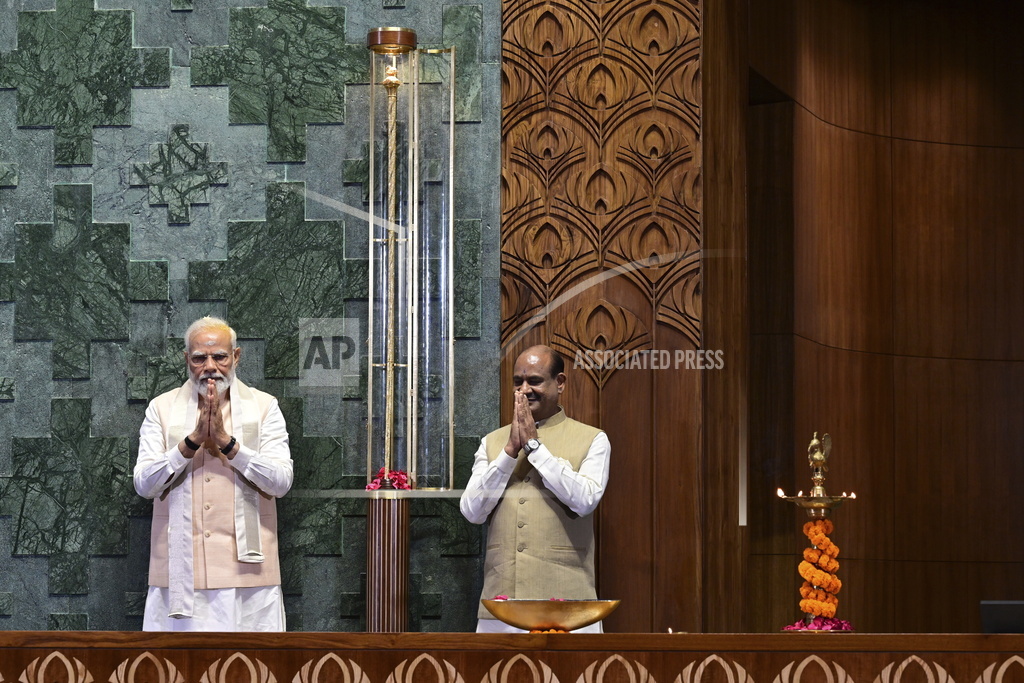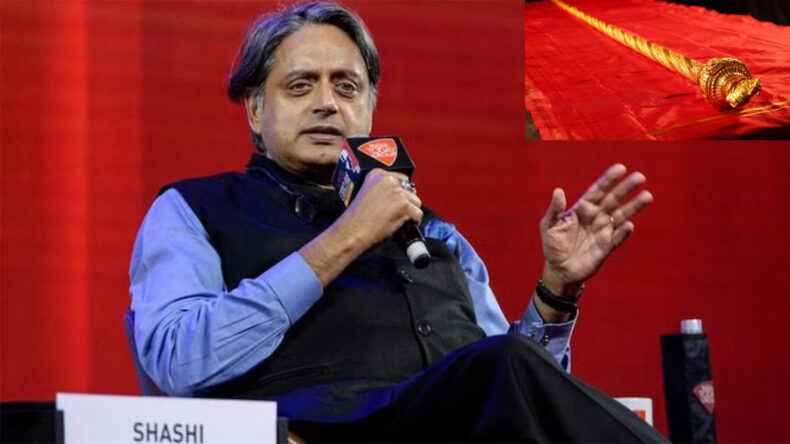Tharoor took to Twitter to share his stance over the Sengol controversy acknowledging the symbolic significance of the sceptre rooted in India’s rich historical past.
Public Intellectual, Author and senior Congress Leader Shashi Tharoor expressed his views over the heated controversy over Sengol or sceptre installed by PM Narendra Modi in the New Parliament building inaugurated today.
He tweeted that the two opposing positions taken by the Centre and the opposition parties can be reconciled, calling them to embrace the sceptre as a symbol of India’s historical past to acknowledge the values of the present.
His remarks come amid a war of words over the controversial legacy of the Sengol with the BJP and PM Modi saying that it was a symbol of the transfer of power from the British Empire to the sovereign Independent Indian government during August 1947 but that it has long been kept as a ‘walking stick’ on display at Anand Bhawan, Prayagraj.
Whereas several opposition parties have united to display combined criticism against the sceptre installation with Congress Leader Jairam Ramesh saying that the BJP’s claims are bogus and targeted at their supporters for political gains in Tamil Nadu. He also took to social media alleging that there is no documentary evidence of Lord Mountbatten, C. Gopalachari and Jawaharlal Nehru portraying the Sengol as a symbol of power.

Both sides have good arguments
Shashi Tharoor expressed his opinion in a long Twitter post saying that the dialectical Sengol controversy according to both sides had good arguments. He opined that ‘the government rightly insists that the sengol depicts a continuity of tradition by symbolize sanctified sovereignty and the rule of dharma’.
He continued, ‘The opposition also rightly argues that the Constitution was adopted in the name of the people and that sovereignty is upheld from the people of India, represented in the nation’s parliament, rather than a kingly privilege handed down by divine right.
Centre-Opposition positions are reconcilable
Tharoor stated that the two sides could be reconciled if we drop the Nehru-Mountbatten component of the saga. He reiterated Jairam Ramesh’s stance that since there is no documentary evidence of the transfer of power, it is no more than a misleading hoax which should be sidelined in the above controversies.
Instead “if one simply let go the debatable red herring about the sceptre being handed over by Mountbatten to Nehru to represent the transfer of power, for which there is no proof yet, the two positions have the potential to be reconciled”.

Tharoor argued that it should be plainly said that ‘the sengol sceptre is a traditional sign of power and authority which is being installed at the Lok Sabha of India, affirming that sovereignty resides there itself and not with any monarch.
The Congress MP urged the warring factions by concluding his tweet with a message to “embrace this sengol sceptre as a symbol from the past to affirm the values of our present”.
Manu Pillai’s Take on Sengol
Meanwhile, another remark over the sengol controversy has been made today by Manu S Pillai, an award-winning author and historian of South India. In an official interview, Pillai said that the PM is not appealing to constitutional norms but to cultural or civilizational legitimacy. He added that the placement of the sceptre near the speaker’s chair is to give that seat a more visibly Hindu quality.

He argued that the symbolic gesture of placing the sceptre in the Parliament is part of a larger project of constructing a Hindu political history through cultural assertion by raising a new set of meanings and legacies. This way the new parliament and the sengol are meant to mark a break from the past which the BJP supporters will see ‘as an act of cultural renascence while others will lament the political Hinduisation of one more national symbol.












